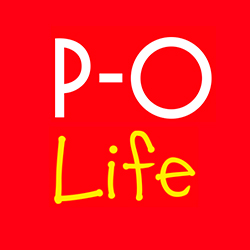Bottling Wine
by Jonathan Hesford
People don’t realise the amount of thought and work that goes on behind putting wine into a bottle. Here’s an overview of the process at Domaine Treloar, but it applies universally on different scales.
Preparing the Wine
First of all we have to make sure the wine is going to survive the journeys and storage conditions before it’s drunk. Nowadays this means making sure that wine left in the heat, stored in a fridge for too long or even put in the freezer, still looks and tastes perfect.
The wine is protected from oxidation and microbial spoilage (turning to vinegar) by adding small amounts of Sulphur Dioxide. This has been used for hundreds of years and in fact the Fr1,000,000 prize offered by Louis Pasteur for developing a better alternative has never been won!
Wine contains proteins which, when heated, can make it cloudy. To remove them we add a strange substance – clay! The clay particles attract the protein molecules and form a sediment, off which the clear wine is racked.
<doc3956|left>When wine is chilled, it deposits crystals of potassium bitartrate. Consumers don’t like to see this in their bottles so we stabilize the wine by chilling it to -2°C for several hours and forcing the crystals to form by stirring in cream of tartar.
We then filter the wine to remove any remains of sediments and yeast through both a set of cellulose pads and a membrane of fixed diameter holes, leaving us with the pure wine which we enjoy drinking.
Bottling Choices
There are many factors in bottling the wine, some practical, some cosmetic. Here they are (listed with the approximate cost per bottle).
– Bottles (20c to €1.50)
o Shape – Bordeaux, Burgundy, Alsace or something unique
o Size – Halves, 75cl, Magnums etc.
o Colour – clear, straw, green, “dead leaf”, cinnamon or blue
o Weight – 75cl bottles can weigh anything from 360g to 800g
– Closure (18c for synthetic stoppers to over €1 for high quality cork)
o Corks, synthetic stoppers or screwcaps
o Quality, length, source, manufacture and marking of corks
– Capsules (cost 4-5c + 3c tax)
o In France capsules are Government controlled and need to match the type of wine. The “Marianne” shows that tax has been paid on the wine. “Recoltant” means the bottler also grows the grapes and makes the wine. “N” stands for Negociant and means the wine has been purchased in bulk from other producers.
<doc3955|right>
– Labels (10c to 30c)
o Choice of style – classical, contemporary, pretty or quirky
o What to say. There is a whole list of rules governing what must and must not be shown on the label before you get around to telling the customer something you want them to know.
o We sent our labels to the Department for the Repression of Fraud before they could be printed.
– Packaging (8c to 20c)
o Shape – 6 or 12 bottles, laid flat or upright
o Quality, colour, design, information.
o Make sure it fits the bottle size and shape!
o How well they will stack on a palette for transport
So hopefully one can appreciate the dilemmas faced by the independent vigneron.
The Bottling Process
You can buy a bottling line (for about €50,000), send your wine to a bottling plant or hire a mobile bottler. Like many small domains we do the latter. They come with all the kit in a truck and install it in the winery for a couple of days.
The bottling line is connected, via a pump and filter, to the tank. It injects inert gas into the bottle, fills it, checks the level, puts in the cork, seals the capsule and applies the labels all in one process. As you can imagine, it requires excellent equipment and a skilled operator. At the far end the bottles are put in the cases by hand, sealed and stacked on palettes which are then clingfilmed for storage.
At the end of the day, the purpose is to produce something that reflects the style of the producer, is attractive to the customer and protects the wine for the long term. Santé!
For more information on this topic, Domaine Treloar or other wine-related questions, you can contact Jonathan on 0468 950229,email jon@domainetreloar.com

